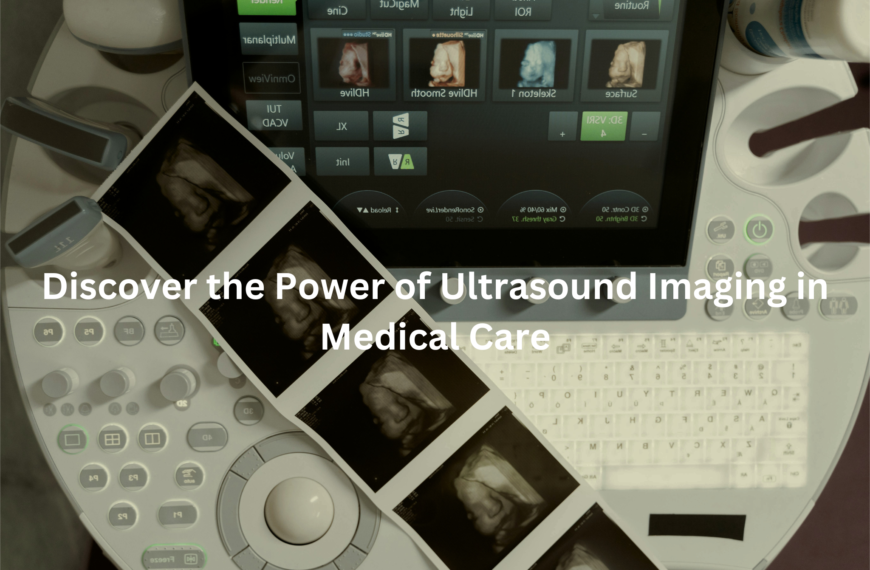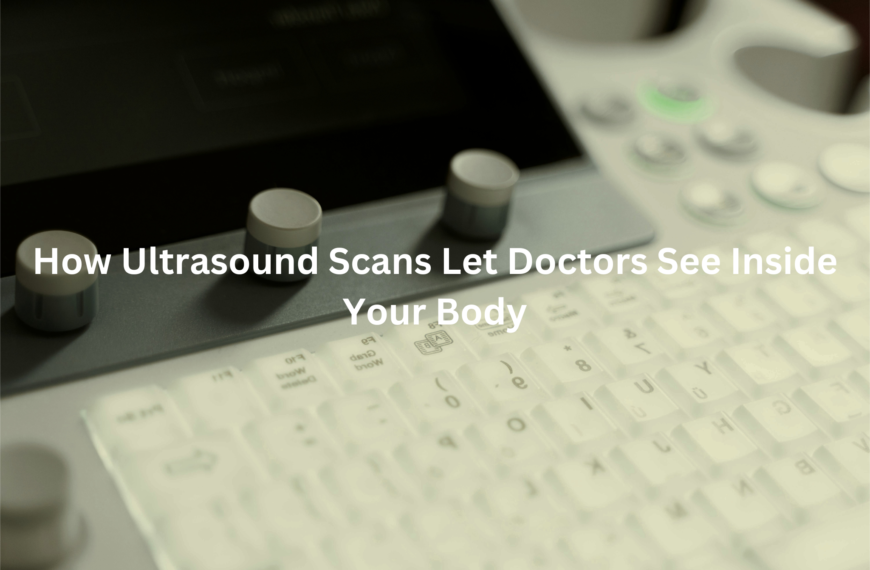Gain clearer insights into the body with fluoroscopy imaging—real-time X-rays that enhance accuracy in diagnosis and treatment.
Fluoroscopy imaging is a vital medical technique that uses continuous X-rays to produce real-time, moving images of internal structures. It assists doctors in diagnosing conditions, guiding interventional procedures, and reducing the need for invasive surgeries.
With advancements in technology, modern fluoroscopy systems provide safer and more precise imaging, improving patient outcomes.
Key Takeaway
- Real-time imaging enhances accuracy – Allows doctors to visualise organ movement, blood flow, and medical device placement instantly.
- Minimally invasive procedures – Reduces the need for open surgery, leading to quicker recovery and lower risks.
- Improved safety measures – Modern fluoroscopy systems minimise radiation exposure while maintaining high-quality imaging.
How Fluoroscopy Works
Fluoroscopy is like an X-ray that doesn’t stop. Instead of a single image, it shows a continuous stream, letting doctors watch what’s happening in real time. It’s crucial for procedures where movement matters—tracking digestion, guiding catheters, or checking blood flow.
The setup includes:
- An X-ray tube – Generates the X-rays
- Filters – Reduce unnecessary radiation exposure
- Image intensifiers or flat panel detectors – Convert X-rays into visible images
- A monitor – Displays the moving images
Sometimes, contrast dye is used to make things clearer. In a barium swallow, for example, the dye coats the oesophagus, highlighting any issues. Safety-wise, modern fluoroscopy systems use lower radiation doses without compromising image quality. (1)
Fluoroscopy vs Other Imaging Methods
Credits: Machineomatic
Fluoroscopy is different from CT scans and MRIs because it doesn’t just take a still image—it captures movement in real time. That makes it especially useful for tracking digestion, assessing joint function, and guiding medical procedures.
While CT scans create detailed cross-sectional images and MRIs are great for soft tissue imaging, both produce static pictures. Fluoroscopy, however, allows doctors to see processes as they happen, making it the better choice when real-time observation is needed.
Fluoroscopy is especially useful for:
- Watching digestion – Seeing food and liquid move through the digestive system, helping to detect reflux or blockages.
- Checking joint movement – Assessing musculoskeletal function, such as how a knee bends or how the spine moves.
- Guiding medical procedures – Ensuring precise placement of catheters, injections, and surgical tools.
By providing a live, moving view inside the body, fluoroscopy helps doctors diagnose conditions more accurately and perform procedures with greater precision. (2)
Common Diagnostic Uses
Fluoroscopy is a vital tool in medical imaging, offering a real-time look inside the body. Unlike standard X-rays, which capture a single image, fluoroscopy provides continuous imaging—helping doctors diagnose conditions and guide procedures with greater accuracy.
Fluoroscopy is commonly used for:
- Gastrointestinal studies – Barium swallows, enemas, and upper GI series help detect reflux, ulcers, blockages, and other digestive issues.
- Cardiovascular imaging – Angiography tracks blood flow, while cardiac catheterisation provides a live view of the arteries to diagnose heart conditions.
- Foreign object detection – Locating swallowed objects, misplaced medical devices, or blockages that may cause complications.
Because fluoroscopy provides instant feedback, it makes many tests quicker and more precise. It also reduces the need for exploratory procedures, allowing for faster diagnoses and more effective treatments.
Interventional Uses of Fluoroscopy
Fluoroscopy isn’t just for diagnosis—it’s an essential tool for minimally invasive procedures, giving doctors a live view inside the body. This real-time imaging makes delicate procedures safer and more precise, reducing risks and improving outcomes.
Fluoroscopy is commonly used for:
- Placing catheters – Ensuring tubes and wires are guided accurately into blood vessels or organs.
- Pain management injections – Targeting joints or the spine with pinpoint accuracy to relieve pain.
- Surgical assistance – Aiding in procedures like stent placements, pacemaker insertions, and spinal surgeries.
Without fluoroscopy, these procedures would be far more complex, with higher risks of complications. By providing a live, moving image, it allows doctors to work with confidence, ensuring treatments are delivered exactly where they’re needed.
Radiation Exposure & Safety Considerations
Radiation exposure is a valid concern, but fluoroscopy has improved significantly over the years. Modern systems are built to keep exposure as low as possible while still providing clear, real-time imaging. With better technology and strict safety measures, patients now face much lower risks than before. Every scan is carefully controlled to ensure it’s both effective and safe.
Key safety improvements include:
- Lower radiation doses – Digital imaging and pulsed fluoroscopy help cut down unnecessary exposure.
- Shorter scan times – Faster imaging means patients spend less time under radiation.
- Protective measures – Lead aprons, thyroid shields, and strict scan limits reduce risks.
The Royal Australian and New Zealand College of Radiologists (RANZCR) enforces strict safety guidelines to ensure fluoroscopy is used responsibly. With these advancements, it remains a valuable tool—used only when necessary and always with patient safety as the top priority.
Patient Preparation & Experience
If you’ve got a fluoroscopy appointment coming up, knowing what to expect can make the whole process less stressful. It’s usually quick, with little to no discomfort, but a bit of preparation can help things go smoothly.
What you need to know:
- Before the procedure – You might need to fast for a few hours, stop certain medications, or take a contrast dye for clearer imaging. If you’re pregnant or have allergies, let your doctor know.
- During the procedure – You’ll need to stay still while the X-ray machine moves around you. If contrast dye is used, you might feel a warm sensation, but it won’t last long.
- After the procedure – Most people can return to normal activities straight away. If contrast dye was used, drinking plenty of water can help flush it out.
Fluoroscopy is designed to be safe and efficient. A little preparation makes all the difference.
Advancements in Fluoroscopy Technology
Fluoroscopy has come a long way, with modern improvements making it safer and more effective than ever. Advancements in technology mean clearer images, lower radiation exposure, and faster diagnoses—benefitting both patients and doctors.
Recent improvements in fluoroscopy:
- AI-assisted diagnostics – Helps radiologists analyse images faster and more accurately.
- Low-dose imaging techniques – Reduces radiation exposure while keeping image quality high.
- Hybrid imaging – Combines fluoroscopy with CT or MRI for a more detailed view when needed.
These innovations lead to better outcomes—more precise procedures, quicker recovery times, and improved patient safety. Fluoroscopy is no longer just an old-school X-ray; it’s now a smarter, more efficient tool in modern medicine.
Fluoroscopy in Australia: Regulations & Best Practices
In Australia, fluoroscopy is strictly regulated to ensure patient safety. The Royal Australian and New Zealand College of Radiologists (RANZCR) sets high standards to minimise radiation exposure while maintaining image quality. This ensures fluoroscopy is only used when necessary and at the lowest possible dose.
Key safety measures in Australian fluoroscopy:
- Safe radiation levels – Modern imaging techniques balance clarity with minimal exposure.
- Expert supervision – A qualified radiologist oversees every procedure for accuracy and safety.
- Extra precautions for children – The Alliance for Radiation Safety in Paediatric Imaging ensures fluoroscopy is as safe as possible for younger patients.
With these protections in place, fluoroscopy continues to be a valuable diagnostic tool, providing real-time imaging while prioritising patient health.
Conclusion
Fluoroscopy remains a crucial tool in modern medicine, offering real-time imaging that enhances diagnosis and guides minimally invasive procedures. With advancements in technology, it has become safer, more precise, and more efficient, reducing risks while improving patient outcomes.
Strict regulations in Australia ensure radiation exposure is kept to a minimum, making it a reliable and trusted imaging method. As medical imaging continues to evolve, fluoroscopy will remain an essential part of accurate and effective patient care.
FAQ
What is fluoroscopy imaging?
Fluoroscopy imaging is a type of medical imaging that uses a continuous X-ray beam to create real-time moving images of the human body. It helps doctors examine body structures, guide interventional procedures, and assist in various diagnostic procedures.
How is fluoroscopy different from other imaging tests?
Unlike magnetic resonance imaging (MRI) or digital X-ray imaging, fluoroscopy provides real-time images rather than still pictures. This makes it useful for monitoring movement inside the gastrointestinal tract, tracking catheter placements, and assessing the function of body systems like the reproductive systems or bile ducts.
What are common fluoroscopy procedures?
Fluoroscopy is used in a range of imaging procedures. Gastrointestinal fluoroscopy includes tests like the barium swallow exam, barium x-rays, and Barium Enema, which help diagnose esophageal disorders, hiatal hernia, and other digestive issues. Cardiovascular imaging, such as cardiac catheterisation, assists in diagnosing heart conditions. Interventional radiology relies on fluoroscopy for intravenous catheter insertion, catheter placements, and surgical procedures. It is also useful for detecting foreign bodies, such as swallowed objects or misplaced medical devices.
How do fluoroscopic systems work?
Fluoroscopic systems use an X-ray image intensifier or flat panel detectors to convert X-rays into visible images. Some modern systems also use minification gain to improve image clarity while reducing radiation doses. More information on diagnostic X-ray systems can be found on the Medical X-ray Imaging webpage.
Is fluoroscopy safe?
Fluoroscopy involves doses of radiation, but modern systems are designed to keep exposure as low as possible. Healthcare providers follow strict safety protocols, including optimising patient positioning, using protective shielding, and limiting fluoroscopy examinations when necessary. Organisations like the Alliance for Radiation Safety in Pediatric Imaging focus on minimising risks, especially for children.
References
- https://www.gehealthcare.com.au/products/computed-tomography/smart-technologies
- https://wavets.com.au/diagnostic-imaging/fluoroscopy/




